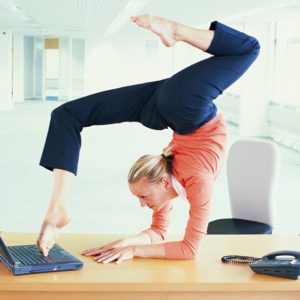
They say that man was created to be active.
We hunt our own food or use our legs to move places. But as time goes by, our society is re-designed in ways that minimize human movement and muscular use. Not only does it limit physical activity but also prolong sitting—when we are working at the office and at home, commuting in public and private cars, or doing requirements in schools and universities. Watching shows on TV, the most favored leisure activity of Filipinos, is also done sitting down.
Sedentary life can affect you in ways you may not realize. Dubbed as the leading cause of disease and disability by the World Health Organization (WHO), physical inactivity increases all causes of mortality, doubles your risk of heart diseases, diabetes, and obesity, and increases your risks for colon cancer, hypertension, osteoporosis, lipid disorders, and mental depression. Studies shows that overall sedentary time has a strong effect on your central adiposity, or also known as your waist circumference. There is a strong evidence that abdominal fat contributes to increasing triglyceride levels in blood as well as developing insulin resistance and diabetes. You are also increasing your chances of forming fatal blood clots in deep veins of the legs that may travel throughout the body and block flow of blood. You also increase load in your spine and disc from slouching. This may lead to compression in the disc in your spine which can make simple movements such as walking tiring and very painful. Who would want that, right?
WHO defined physical activity as any bodily movement produced by skeletal muscles that requires energy expenditure. It is recommended that adults aged 18 to 64 years old do at least 150 minutes of moderate physical activity per week. For additional health benefits, adults should increase their moderate-intensity activity to 300 minutes per week. However, for people who are still figuring out how they can fit these recommendations in their daily lives, they can start doing baby steps and advancing in their goals as they move along.
Here are some tips to help you move each day:
Do simple body stretching during TV commercials. If you can, you can increase intensity by doing squats or jumping jacks.
Walk for 5 minutes every one or two hours.
Try to save 15 minutes of your lunch break to do your routine walking. This will not only increase your activity but also energize you to work on the second part of your day.
Do some wall or counter push-ups or tip-toes while your wait for your food to cook or heat up.
Use a bottle with about 1-2 liters of water as dumbbells and do biceps or triceps curls while watching your favorite shows.
6. You can also do chair exercise such as stand-and-sit exercises in the office once in a while.
It is also advisable to look for opportunities to do extra movement in your chores. Have a message for your officemate down the hall? Might as well go personally to him/her instead of sending an email or phone call. Simple improvements in activity may not matter much individually, but making it a routine will do. In the end, it’s up to you. Will you just sit or be fit?

